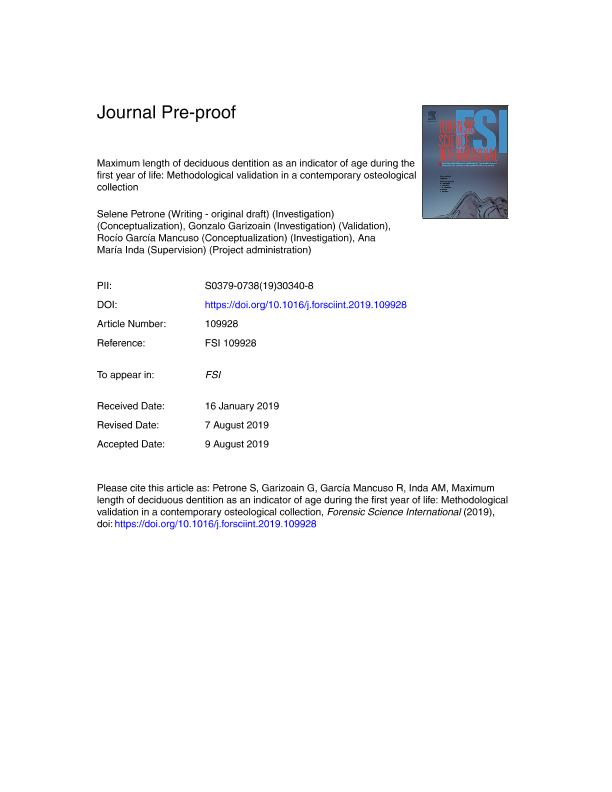Artículo
Maximum length of deciduous dentition as an indicator of age during the first year of life: Methodological validation in a contemporary osteological collection
Fecha de publicación:
08/2019
Editorial:
Elsevier Ireland
Revista:
Forensic Science International
ISSN:
0379-0738
Idioma:
Inglés
Tipo de recurso:
Artículo publicado
Clasificación temática:
Resumen
Out of all the available methods for estimating age at death from immature human skeletal remains, those based on odontometric variables of deciduous dentition have proved to be one of the most accurate. The development of odontometric methods has been improved through the creation of documented human osteological collections, allowing their validation in different populations. The present study aims to test the regression equations for age estimation proposed by Liversidge et al. 1993, Irurita Olivares et al. 2014, and Cardoso et al. 2019, on the basis of the maximum length of deciduous teeth in an Argentinian sample of 35 infants of known age at death. The results showed that the absolute mean difference between estimated and chronological age was 5.76 ± 6.33 weeks for Liversidge's method, 5.71 ± 6.41 weeks for Irurita Olivares's method, and 6.79 ± 5.80 for Cardoso's method. It was also found that, for Liversidge's method, the canines provided the most accurate and the least biased estimations. For Irurita Olivares's method, mandibular anterior teeth were the most accurate, while the first mandibular molars offered the least biased estimations. For Cardoso's method, the canines presented the most accurate estimations, while the lateral incisors the least biased ones. Finally, 95% confidence intervals of estimated ages were calculated for each method, finding that Irurita Olivares's method provided the most reliable age estimations when using mandibular central incisors and mandibular first molars.
Archivos asociados
Licencia
Identificadores
Colecciones
Articulos(CCT - LA PLATA)
Articulos de CTRO.CIENTIFICO TECNOL.CONICET - LA PLATA
Articulos de CTRO.CIENTIFICO TECNOL.CONICET - LA PLATA
Citación
Petrone, Selene; Garizoain, Gonzalo; Garcia Mancuso, Rocio; Inda, Ana María; Maximum length of deciduous dentition as an indicator of age during the first year of life: Methodological validation in a contemporary osteological collection; Elsevier Ireland; Forensic Science International; 303; 109928; 8-2019; 1-30
Compartir
Altmétricas




